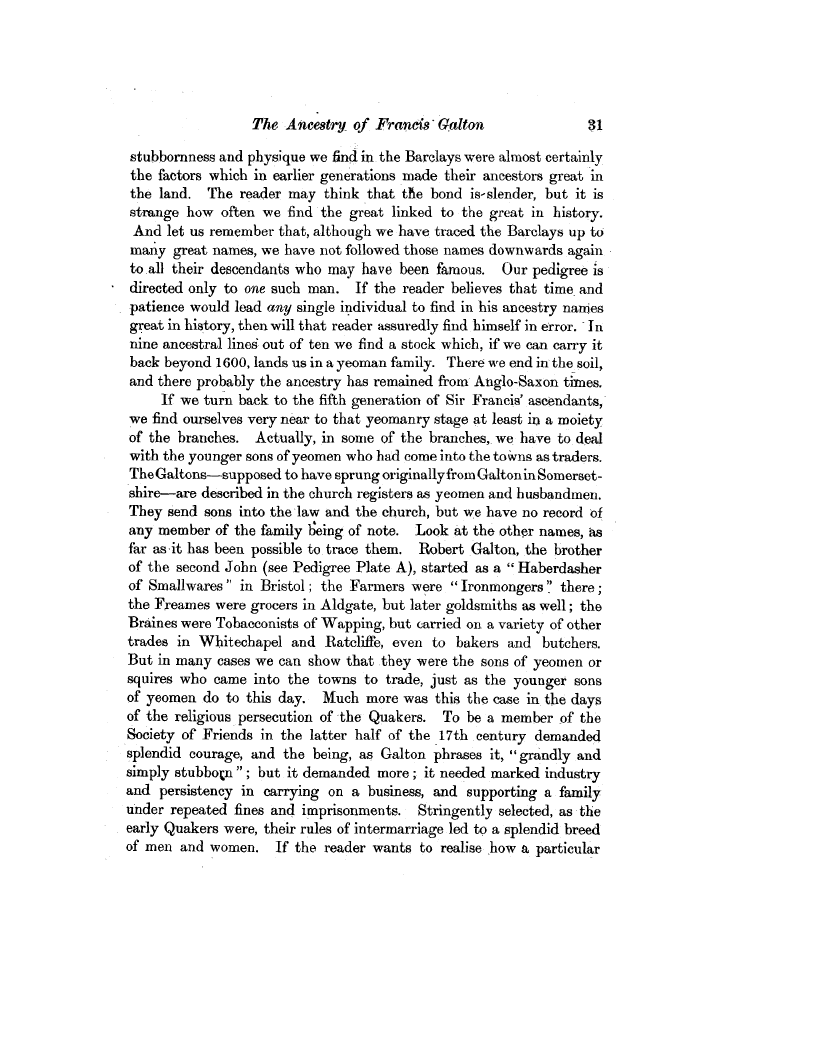The Ancestry of Francis ` Galton 31
stubbornness and physique we find in the Barclays were almost certainly the factors which in earlier generations made their ancestors great in the land. The reader may think that the bond is-slender, but it is strange how often we find the great linked to the great in history. And let us remember that, although we have traced the Barclays up to many great names, we have not followed those names downwards again to. all their descendants who may have been famous. Our pedigree is directed only to one such man. If the reader believes that time. and patience would lead any single individual to find in his ancestry names great in history, then will that reader assuredly find himself in error. - In nine ancestral lines out of ten we find a stock which, if we can carry it back beyond 1600, lands us in a yeoman family. There we end in the soil, and there probably the ancestry has remained from Anglo-Saxon tines.
If we turn back to the fifth generation of Sir Francis' ascendants,' we find ourselves very near to that yeomanry stage at least in a moiety of the branches. Actually, in some of the branches, we have to deal with the younger sons of yeomen who had come into the towns as traders. TheGaltons-supposed to have sprung originally from Galton in Somersetshire-are described in the church registers as yeomen and husbandmen. They send sons into the -law and the church, but we have no record of any member of the family Being of note. Look at the other names, as far asdt has been possible to trace them. Robert Galton, the brother of the second John (see Pedigree Plate A), started as a "Haberdasher of Smallwares " in Bristol ; the Farmers were "Ironmongers" there ; the Freames were grocers in Aldgate, but later goldsmiths as well ; the Braines were Tobacconists of Wapping, but carried on a variety of other trades in Whitechapel and Ratcliffe, even to bakers and butchers. But in many cases we can show that they were the sons of yeomen or squires who came into the towns to trade, just as the younger sons of yeomen do to this day. Much more was this the case in the days of the religious persecution of -the Quakers. To be a member of the Society of Friends in the latter half of the 17th century demanded splendid courage, and the being, as Galton phrases it, "grandly and simply stubbotn " ; but it demanded more ; it needed marked industry and persistency in carrying on a business, and supporting a family under repeated fines and imprisonments. Stringently selected, as the early Quakers were, their rules of intermarriage led to a splendid breed of men and women. If the reader wants to realise how a particular
